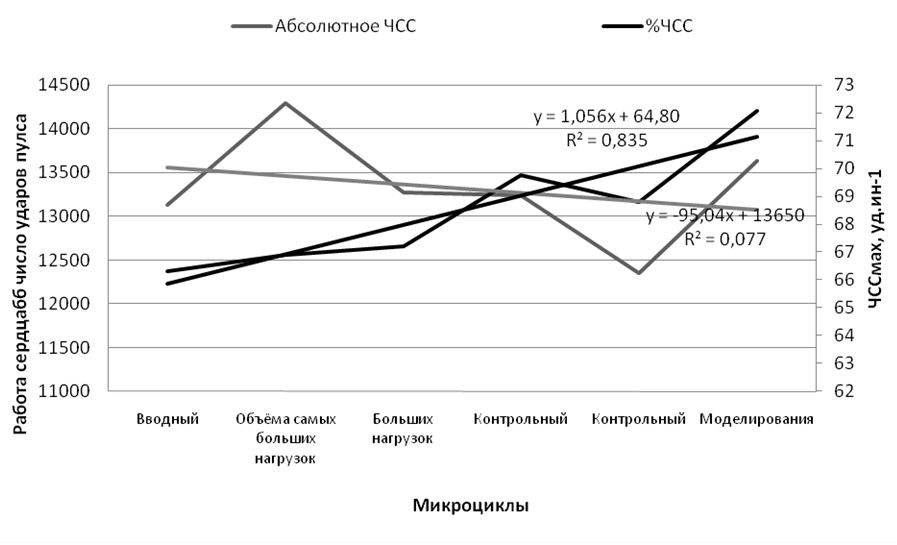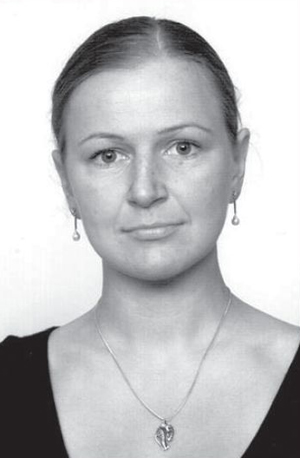DURATION, CORRELATION OF CONTENT, VOLUME AND INTENSITY OF PRE-SEASON TRAINING PROGRAM FOR ELITE FEMALE HANDBALL PLAYERS
Фотографии:
ˑ:
Gintarė Onusaitytė, doctoral student
Antanas Skarbalius, Dr.Hab.
Lithuanian academy of physical culture, Kaunas, Lithuania
Key words: handball, volume, intensity, cardiac rate, pre-season.
Introduction. Contemporary women's handball is associated with high intensity of playing actions, quick diversions whilst playing, on-field power confrontations, great variety of applied playing methods in attack and defence [1, 2, 16, 17, 20]. All this requires from athletes not only good technical and tactical preparedness but also a high level of development of special physical properties and skill to realize them in the complex game environment [4, 5, 12, 22].
In some researchers’ opinion, physical training of players is to be a priority in the pre-season [10], while others [9, 13, 14, 19] are concerned that training in sports games must be complex with the dominating physical training
The ratio of integral (30%), tactical (25%), technical (20%), physical (15%) and theoretical (10%) trainings is proved to be optimal in sports games. The volume and intensity of used loads is of special importance, along with the contents of the pre-season training program.
The researchers [3] allocated the basic requirements in handball, but modern woman's handball can be developed using up-to-date information corresponding to mastership of certain level and sex of handball players.
The purpose of the research was to study the contents and correlation of the volume and intensity of the pre-season training program for elite female handball players.
Materials and methods. 14 female handball players (prize-winners of Lithuanian championships 2006, 2007, 2008, 2009, 2010), aged – 20,8 ± 2,4, height – 1,76 ± 6,1 sm, body weight – 69,9 ± 9,7 kg, VO2мax, 45,8 ± 5,8 ml kg min -1 were subjected to the experiment. Heart rate was registered at trainings all the pre-season long using “Polar Team System” heart rate monitors (Finland) to determine intensity. The contents and volume were recorded as well. Mathematical treatment of the research results was made by means of Microsoft Office Excel 2003 and Statistica with the use of common methods of variation statistics with allocation of the average (x), standard deviation (SD), Student’s variable (t) with estimation of significance test (p < 0,05).
Results and discussion.
Volume of physical load. The pre-season lasted six weeks (42 days). The pre-season included 33 days of practising and playing and 9 days of rest with the total of 47 of practical classes, so altogether 4887 minutes were devoted to practices which constitute 81 astronomic hour, or 109 academic hours, and also, 6 games were played. According to Boraczynski and Urniaz [10] and Skarbalius [19], six weeks are enough to prepare for the season, but the opinions differ when talking about the physical activity levels: Boraczynski and Urniaz [10] claim that elite handball players need to practice 61 time, while for highly skilled players [19] it is from 48 to 53 times.
A 6 week-training program was proved to be enough for highly skilled female handball players for pre-season training but it has to be of smaller volume.
The content structure. During the pre-season the largest amount of time was devoted to integral training (19,8 ± 10,3%), the smallest – to tactical (8,3 ± 6,2 %), athletic constituted 16,4 ±10,2 %, technical - 11,4 ± 6,2 %, theoretical - 10,2 ± 5 % of all the training time. 17,8 ± 5,3 % and 16,1 ± 6,4 % were given for training for physical loads and recovery after workouts respectively. Skarbalius [19] claims that during the pre-season period attention is to be focused mostly on athletic training of players (32,1 %), and the least - to theory (12,2 %). Boraczynskis and Urniaz [10] agree that athletic training is to be the most significant in this period, and single out endurance and power trainings. According to Bangsbo (1994), integral training is to take most of the time (30%), and the least is left for theoretical one (10%).
The content structure of organization of the pre-season was found where most of the time was dedicated to complex training and the least - to tactical one, as claimed by the above mentioned authors [8, 9, 10].
Variation of physical load and intensity. The volume and intensity of loads applied in single microcycles (Fig. 1) varied diversely during the pre-season, and the regressive analysis allows the 84 percent accuracy in the forecast of the %HRmax.
During the analysed period, the volume of loads has been decreasing from the first to the last week, but intensity of workouts has been growing [6]. The mean heart rate of female handball players at workouts was around 13195,1 ± 1458 beats and varied during workout from 7855,6 to 15091,4 beats. Ignat’eva and Portnova (1997) claim that while playing heart rate varies from 9800 to 10800 beats. The mean HRmax was 138,1 ± 7,4 bt.min–1 and varied from 116,9 to 149,4 bt.min–1, and the average intensity of workout was 69,95 ± 3,7 %HRmax and varied from 59,3 to 75,6 %HRmax.
The volume and intensity of the loads applied were lower than it had been estimated by the researchers [3, 7, 16, 17, 20] in the competitions.

Fig. Fluctuation of the volume and intensity of physical loads in different microcycles during pre-season
Heart work characteristics. Based on the estimated in vitro HRmax values of handball players of the first and second ventilatory thresholds and the limit of extreme intensity, the variation of work characteristics of anaerobic and glycolytic thresholds and work over the lactate concentration threshold can be analyzed. Anaerobic activity was the most widely used and decreased by 20% for the period from the beginning (91%) till the end (71%). The work characteristics in the glycolytic regimen increased by 18,5% from the beginning (9%) till the end (27,5%). The work over the lactate concentration threshold, acquiring the biggest effort, varied from 0,4% to 3,5%, and dominated during control microcycles (from 2,1% to 3,5%). As claimed by the researcher [11], work in the glycolytic regimen is predominant (52,2%) during competitions, while aerobic one and work over the lactate concentration threshold are 31% and 16,2% correspondingly.
Aerobic workout was predominant during trainings, but as stated by the authors [18, 21], work in the glycolytic regimen was the most dominating during competitions.
Conclusion
6 weeks were proved to be enough for a pre-season training. In the pre-season training is to be complex and deal with all types of trainings with most of the time dedicated to integral training and least – to tactical training. The intensity of loads has been increasing from the beginning till the end of the pre-season and the volume has been declining. In the beginning of the pre-season aerobic work was dominating during the workout, whereas in the end high intensity work increased. Herewith, the limits of the 6-week pre-season were established: change in the alternation of the contents and intensity of the contents and volume and optimal limits (HR).
Bibliography
- Agribi, B.M. The structure and cintents of long-term physical training of Tunisian handball players: abstract of doctoral thesis (Hab.) // B.M. Agribi. – Мoscow, 1996. (In Russian)
- Aleshin, I.N. The model of the year training cycle of elite handball players: abstract of doctoral thesis (Hab.) // I.N. Aleshin. – Мoscow, 2004. (In Russian)
- Ignateva, V.Ya. Handball / V.Ya. Ignateva, Yu.M. Portnov. Мoscow: Fizkultura, obrazovanie i nauka, 1997. (In Russian)
- Mezher, H.Sh. Analysis of competitive activity as a condition of increase of effectiveness of training process of elite handball players: abstract of doctoral thesis (Hab.) / Mezher, H.Sh.. – Мoscow, 2011. (In Russian)
- Platonov, V.N. On the concept of periodization of sports training and development of general theory of athlete training / V.N. Platonov // Teoriya i praktika fizicheskoy kultury. – 1998. – № 8. – P. 23–39. (In Russian)
- Suslov, F.Р.On the strategy and competition practice of single sport in the Olympic / F.R. Suslov // Teoriya i praktika fizicheskoy kultury. – 2002. – № 11, – P. 30–33 (In Russian)
- Alexander, J. An analysis of fitness and time-motion characteristics of handball. / J. Alexander, L. Boreskie, // American Journal Spots Medicine, – 1989. – 17 (1): 76–82.
- Bangsbo, J. Fitness training in Football – a Scientific Approach. / J. Bangsbo // Copenhagen: August Krogh Institute University of Copenhagen, 1994.
- Bompa, O.T. Theory and Methodology of Training (Fourth edition) / O.T. Bompa // Human Kinetics, 1999.
- Boraczynski, T. The Influence of Physical Training on Anaerobic Fitness of Elite Handball Players / Boraczynski, T., Urniaz, J. // MEDSPORTPRESS, research yearbook, – 2009, – 14 (2): 69–73.
- Cardinale, M. Handball Performance: Physiologocal Considerations & Practical Approach for the Training Metabolic Aspects. / M. Cardinale, // Internet link: http://coachesinfo.com/category/team_handball/176/. In 2000
- Cherif, M. The Effect of a Combined High-Intensity Plyometric and Speed Training Program on the Running and Jumping Ability of Male Handball Players. / M. Cherif, M. Said, S,. Chaatani, O. Nejlaoui, D.Gomr, A. Abdallah, // Asian Journal of Sports Medicine, – 2012, – 3 (1): 21–28.
- Dick, F.W. Sports Training Principles. / F.W. Dick, // A & C Black, 1997.
- Eliot, B. Training in sport. / B. Eliot, // John Wiley & Sons, 1998.
- Hughes, M. Notational Analysis of Sport. / M. Hughes, I.M. Franks, // London: Routledge, 2006.
- Manchado, C. Motion analysis and physiological demands in international women’s team handball. / C. Manchado, P. Platen, // 14th annual ECSS Congress Estoril/Portugal, July 9–12, 2009.
- Michalsik, L.B. Activity Match Profile and Physiological Demands in Female Elite Team Handball / L.B. Michalsik, K. Madsen, & P. Aagaard, // In Frantisek Taborsky (Eds.), EHF Scientific Conference, “Science and Analytical Expertise in Handball” (pp. 162–168). Vienna: Austria, 2011.
- Souza, J. Changes in metabolic and motor performance variables induced by training in handball players / J. Souza, A. Gomes, L. Leme, S. Silva, // Revista Brasileira de Medicine do Esporte, – 2006, – 3 (12): 188—122.
- Skarbalius, A. (2003). Didelio meistriškumo rankininkų rengimo optimizavimas / A. Skarbalius // Habilitacinis darbas. Vilnius: VPU, 2003.
- Póvoas, S. Activity Motor Pattern and Heart Rate during Elite Team Handball Matches / Póvoas, S., Soares, J., & Rebelo, A // In Frantisek Taborsky (Eds.), EHF Scientific Conference, “Science and Analytical Expertise in Handball” (pp. 186–191). Vienna: Austria, 2011.
- Rannou, F. Physiological profile of handball players. / F. Rannou, J. Prioux, H. Zouhal, A. Gratas-Delamarche, & P. Delamarche, // Journal of Spots Medicine and Physical Fitness, – 2001, – 41, 349–353.
- Ziv, G. Physical Characteristics, Physiological Attributes, and On-court Performances of Handball Players: A review. / G. Ziv, Lidor, R. // European Journal of Sport Science, – 2009, – 9(6): 375–386.
Author’s contacts: g.onusaityte@gmail.com


